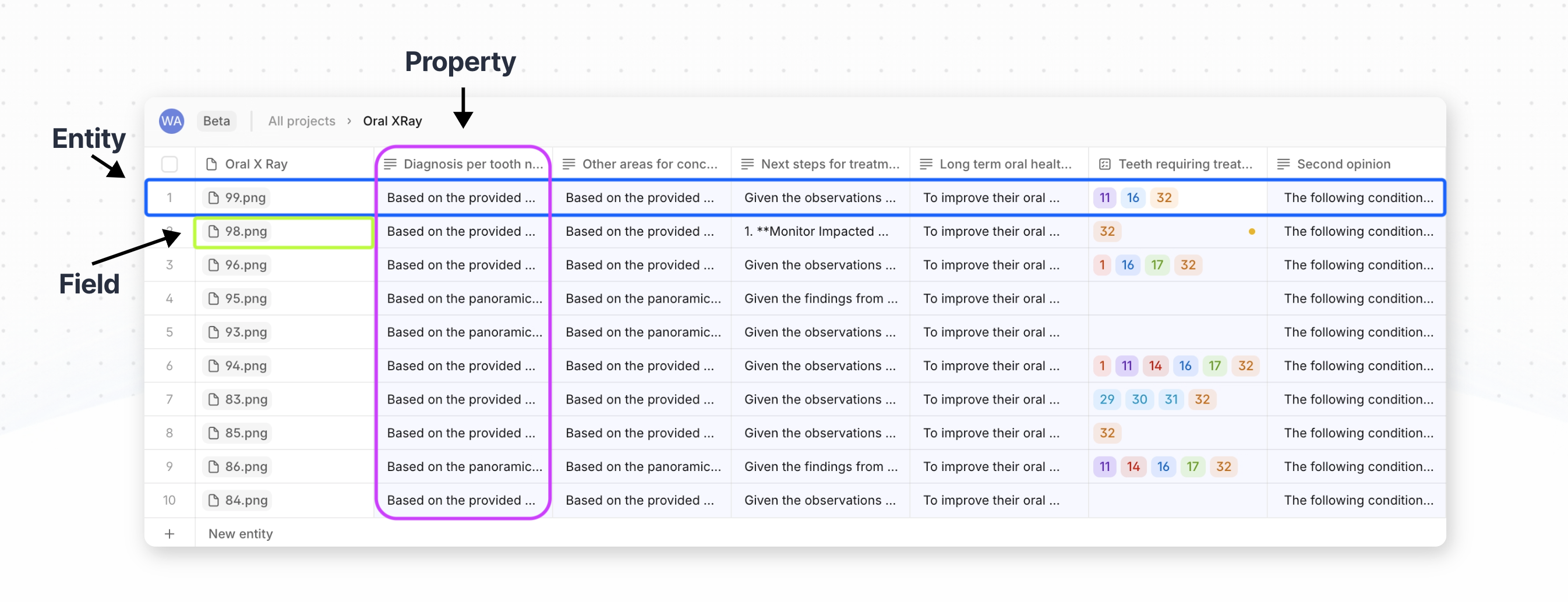Understanding Fields in V7 Go
Here is an overview of what Fields are in V7 Go and how they are calculated.
What are Fields?
In V7 Go, Fields are the building blocks of your workflow. You can think of them like cells in a spreadsheet:
- Entities act as rows
- Properties act as columns
- Fields are the individual cells, created where an Entity (row) intersects with a Property (column).

For example: 50 Entities (rows) multiplied by 10 Properties (columns) = 500 fields.
How Field Usage is Counted
- Cumulative tracking: Once a field is created, it counts toward your usage total. Deleting it later does not reduce your count.
- Collections: Fields inside collections are counted the same way.
- Example: A collection of 52 items with 4 properties equals 208 fields.
- New fields are generated when:
- You upload a new file to an agent.
- You manually add a new row using the "+" button.
- Prompt updates: Editing or refining a prompt inside an existing property does not add to your field usage. As such, clicking “Recompute all fields” after editing an existing property does not add to the field count.
Tips to Reduce Field Usage
Here are a few strategies to help you optimize:
- Test on small subsets
When experimenting with new prompts, try them on a small dataset before applying them to your production agents. - Refresh existing prompts
If you’re improving a prompt, update the existing one and refresh — rather than creating a brand new prompt, which would consume additional fields. - Bundle related fields
Instead of extracting each property separately, you can group related fields into a single JSON prompt with a clear schema.
Example: Instead of separate calls forstart_date,end_date, andrent_amount, combine them into one prompt.
Let's take a look at an example:
Let’s say you upload a dataset with 200 Entities (rows) and 5 Properties (columns).
Your total fields are 200 x 5 = 1000 Fields in total.
Now, if you add a new Property, you’ll generate 200 more fields.
By understanding how fields are counted, you can plan more efficiently and make the most of your usage.
Updated 3 months ago
